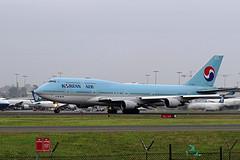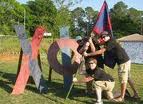 The Korean language is the official language of the Democratic People's Republic of Korea and Jilin province in China. Distributed language in the USA, Japan, China, Canada and Russia. They say it about 78 million people in the world. Foundation of modern Korean literary language is the main central Seoul dialect dialectic group. In the DPRK, as a cultural language (or munhvao) used Pyongyang dialect. In total there are six dialectical groups.
The Korean language is the official language of the Democratic People's Republic of Korea and Jilin province in China. Distributed language in the USA, Japan, China, Canada and Russia. They say it about 78 million people in the world. Foundation of modern Korean literary language is the main central Seoul dialect dialectic group. In the DPRK, as a cultural language (or munhvao) used Pyongyang dialect. In total there are six dialectical groups.
This north-eastern group, the north-western group, central, south-east, south-western group of dialects, and Jeju Island. There are many assumptions about origin of the Korean language. Various historians and linguists have classified the Korean language to different language families and language groups. So say Japanese, Dravidian, Altaic, Tungus-Manchu, and Indo-European palaeoasiatic origin of the Korean language. However, the Korean language belongs to the Altaic language family and is (and Japanese) language isolate. Probably the ancestors of the Korean people came to the Korean peninsula from Mongolia, Altai, or Manchuria, about 3 to 4 thousand years ago. Until now, scientists and linguists debate about what kind of relationship are languages and languages of Koguryo, Baekje and Silla to the modern Korean language.
All three language have a similar vocabulary and grammar. In spite of this, the lowest similarity is Koguryo language, which presumably is the basis of or have family ties with the Japanese language. Linguists are more inclined to believe that the language of the sill is the ancestor of the Korean language. There is speculation that Korean and Japanese languages are related.

Comments are closed.